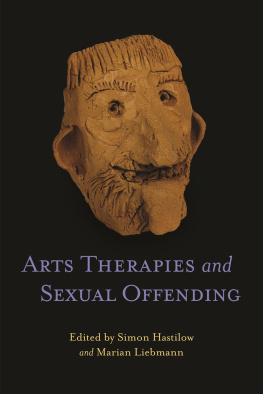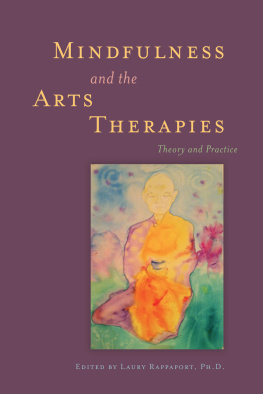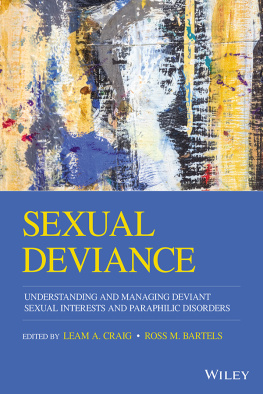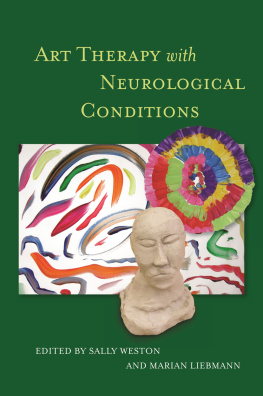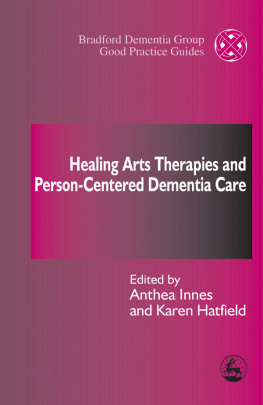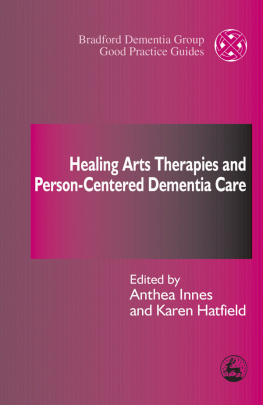Contents

Arts Therapies
and Sexual Offending
Edited by
SIMON HASTILOW
and MARIAN LIEBMANN
Foreword by Stanley Ruszczynski

Contents
List of Figures
Foreword
It is probably generally agreed that the most difficult patients and clients in the care of the criminal justice system and the forensic services are sex offenders. Because of the nature of their offending they are described as disturbed and difficult, but more accurately we should describe them as disturbing, because their behaviour often arouses difficult feelings in most of us, including in the staff who work with them. Because of these disturbing feelings aroused in us, such offenders are often demonized, marginalized and not considered worthy of care and treatment.
The sexual offence is always an act of aggression, emotional and physical, with the aggression being sexualized into what Robert Stoller called an erotic form of hatred (Stoller 2018, p.4). The sexual offender, by definition, is attacking the most intimate, vulnerable and private part of the victim the sexual body, which is rooted in early infantile experiences with the parental caregivers. With child victims, the sexual offender is also attacking the childs age-appropriate innocence, and inherent need to trust the dependency on and safe attachment to adults. Such safe dependency and attachment are necessary so as to experience the developmental importance of recognizing the indisputability of our human need to manage dependence and to recognize generational differences. Without these there is likely to develop a narcissistic and antisocial personality structure, with major problems in developing healthy relationships.
It is likely that the sexual offender, especially the child sexual offender, is demonstrating that his/her emotional vulnerability is at the most primitive bodily level where language did not exist and the abuse and neglect remained in the experience of the vulnerable physical body.
We know that most sex offenders were themselves the victims of emotional, sexual and/or physical abuse. This absence of reasonable parental care leaves the infant not only without the experience of having been cared for, but also of having been the victim of the parental difficulties and traumas. As a result, there has been little experience of having difficult emotional states understood and managed and therefore eventually learning to do so for oneself. Hence, unconsciously reversing this interaction through an identification with the aggressor and the neglecter and becoming the aggressor or neglecter and creating a victim in the person they have attacked, is often the unconscious psychological escape from their unbearable experience of having been neglected and abused.
Such evacuative behaviour becomes the only form of communication because the use of language is missing or compromised. The lack of an internal thinking space results in the likelihood that the offender will use surrounding external space, especially other people, to externalize unbearable internal states. In doing so, by emotionally projective processes and actual behaviours, the other becomes the one feeling the unbearable emotional states.
If such patients and offenders enact their internal states, then in the clinical situation the practitioner, in his/her affective response is likely to become the recipient of that projective process. From a clinical perspective, therefore, the clinician needs to have a setting and develop a stance in which this projective and sometimes behavioural emotional evacuation can be experienced, understood, thought about and eventually used to inform comments and understandings offered to the patient/offender.
In the more traditional psychological talking therapies, the transferencecountertransference relationship is the arena for that re-emergence of these unconscious unbearable states. The practitioner makes him/herself available to be the recipient of the projection of these internal states and by paying careful attention to the feelings projected into the therapist, the countertransference, some access may eventually be gained to what cannot be spoken. It could be said that such a clinician offers him/herself as the canvas or screen onto which the patient will unconsciously project his/her unbearable emotional states. Coming to understand what is being written or drawn on that canvas becomes the information by which the patients internal world might come to be understood.
Many of the papers in this collection describe work with art therapy, but also cover dramatherapy, music therapy and dance movement therapy. They describe work in the prison system, in secure psychiatric settings and in the community. In each case offenders are offered a setting in which they can make use of a form of therapeutic engagement through which they can express something of themselves in the use they make of the particular arts therapy experience being offered.
In these settings, the creative process itself has the potential to become the vehicle by which the offender will unconsciously express internal states that cannot be verbalized. The artwork, whether that is drawing, painting, movement, making music, role-play acting or writing a story, becomes the vehicle for the behavioural expression of internal states that cannot be verbalized directly. It is relevant to say that these interventions take place in the context of a relationship with the arts therapist, a relationship that creates the boundaried setting for the patients self-expression.

